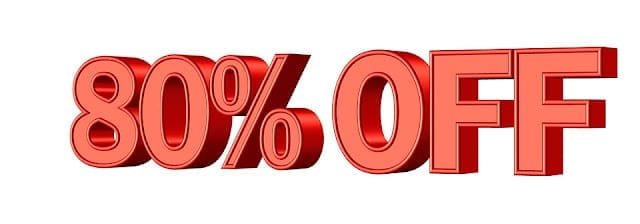It is advisable for any entrepreneur, that before you venture into a business, you should test the waters first. The key to this advice is blue ocean thinking. You don’t want to fight large corporations when you are executing a business idea. Instead you want to find something that is very innovative and profitable and serves a customer problem that others have not thought of yet. And here’s where the Porter’s Five Forces Model and Analysis comes into play.
The Porter’s Five Forces Model is basically a market research tool. It is an analytical took wherein you consider five forces to find whether the market that you are about to enter into, is profitable and non-competitive or not. You can even use this model for your competitor research.
The Five Forces of the Porter’s Five Forces Analysis
The five forces that you must watch out for, are –
- The rivals in the industry,
- The threat of entry of new players in the market,
- The bargaining power of suppliers,
- The bargaining power of buyers, and
- The threat of substitutes.
In this article, we shall be going over all these forces as well as be showing you how you can use this analysis to supplement your market research process.
If you need any help for market research, book a free consultation with us. We offer market research services for entrepreneurs looking to create a startup. We would be happy to offer you a free consultation and a report as well.
But before we go over the forces in detail, you need to understand how these forces act.
First, take for example, that the market already has a lot of powerful and entrenched players. In that case, you need to ask yourself if your product offers any innovation that solves customer problem that no other competitors are solving yet.
For example, take the smartphone industry. It is a highly saturated industry at the moment. Unless your startup offers an innovation that is better in orders of magnitude, your business won’t make it.
Plus, the more competitive a market is, the lesser the profitability it offers. Similarly, if the market has no competitor, you may think it is a great place to enter. But it may be the case that the customer’s need is being met by a substitute product.
For example, suppose in a country, there is no Pizza parlor. It may be a great place for a pizza franchise to be set up but it can be the case, that the people there don’t find Pizza to be that great a food choice and are meeting their needs through substitute food products.
In fact, this is the reason why several of the American food business ventures in India failed.

So, in essence, if you are creating a startup in a market, you need to look for the following-
- You need there to be a high barrier for entry so that businesses can’t come up immediately after you.
- You need to ensure that your suppliers or customers do not have high bargaining power over you.
- Lesser the pre-existing competition, the more the profits available for you.
- The solution that you are providing to your customers should not have been met already by substitute products or services.
The Competition in the Market – Force #1 of the Five Forces Analysis
It’s pretty simple, the more competitive the market is, the more you need to engage in price wars, price cuts and marketing programs to draw and keep customers. This type of market is characterized by –
- high exit barriers which prevent competitors from leaving the market,
- Non-differentiated products that are easily substitutable,
- Low customer loyalty.
But if you have already entered this market, then here’s how to work it to your advantage. First thing’s first – you have to differentiate your products.
For example, take Apple.

The smartphone industry is heavily competitive. But Apple manages to draw in huge profits, all thanks to their high customer loyalty, which they achieved through differentiation. While Android phones are easily substitutable because they use the same underlying OS, Apple is completely different.
Plus, with the interconnection among the iOS and the MacOS as well as other Apple products, once you enter the Apple ecosystem, it is harder for you to substitute the products.
A great way to achieve differentiation and making your product harder to substitute is by offering complements (complementary products or services).
For example Amazon Prime offers so many complements – you get free and faster deliveries, PrimeTV – which none of its competitors are able to offer.
So basically, in a highly competitive market, don’t engage in marketing tactics like the others. Instead try to differentiate your products and make yourself harder to substitute. And while you are at it, create a business model canvas that allows for complements that your customers would love to receive.
The Threat of New Entrants in the Market – Force #2 of Porter’s Five Forces Model
If the barrier to entry in the market is too low, you will often find businesses waiting outside for first movers to dip their fit in.
If they find that you are successful in entering the market, they will immediately jump in and blitzscale and try to grab the market from you. This is where the barriers to entry comes into play. If the market can be easily entered upon, then the first movers’ advantage is much less compared to a market that has a lot of formalities or set up required for new entrants.
This threat is present when the following market conditions are present-
- Low investment capital and regulatory approval is required for startups to enter the market,
- Customers do not gravitate towards branding,
- There is low intellectual property protection for existing products or services,
- Economies of scale can be easily achieved by new entrants,
- Low customer loyalty among brands and ease for customers to switch from one business to the other.
The following video offers a great explainer on this-
This is a tough market to crack as there is often low branding needs for customers and customers can switch to other businesses easily.
Still, the route to crack this threat is the same as the previous one. This is because while the previous threat dealt with pre-existing competition, this deals with competition that can sprout up fast.
The Bargaining Power of Suppliers – Force #3 of Porter’s Five Forces
This force affects your free-play in the market. If your entire business model or revenue model depends upon your suppliers you have very little leeway and your suppliers have quite a large bargaining power compared to you.
This force is marked by –
- If the suppliers are less in number in a market or,
- If they are formed as cartels or,
- If the resources tapped by the suppliers are unique in their own nature resulting in differentiated products, then you got a problem in your hands.
It may also happen that the cost of switching suppliers is quite high which is why suppliers enjoy a far greater leeway in setting their own terms and conditions.
Small startups usually do not have much options in this regard. A classic example is the chip industry. PC chips are made by AMD and Intel whereas smartphone chips are made by Qualcomm predominantly. While Apple makes its own chips, in the case of Android phones, here, the supplier has much greater bargaining power.
And that’s why Samsung is trying to branch out and create its own processor series – the Exynos. But to enter a completely different market is often very difficult and bordering near impossible for startups. And, that’s why you would do better to recognize such instances before you enter the market place.
But what happens in the exact opposite condition? That’s what’s the fourth force of the Porter’s Five Forces Analysis is dedicated to-
Force #4 – The Bargaining Power of Buyers

This force is strong in market conditions wherein the buyers buy in bulk and there are a lot of sellers. Even if the buyer is not the end customer, if he / she controls the access to the customers, the end result will be the same.
This type of market often sprouts out quite surprisingly. It is often found in B2B businesses rather than B2C. Plus the market has to be price sensitive and there is often a lot of substitutes in the market place allowing for the buyer to easily change the seller or supplier.
Again, this is a tricky market to wander around in. A very famous example of how this force played out is in the Amazon-FedEx saga.
Amazon, being one of the largest customer of FedEx bought its services at much lower price compared to other customers of FedEx. What FedEx did was to get Amazon’s contracts by undercutting the competition and making up for the lost profits from the other customers.
But soon, Amazon branched out with a delivery service of its own – which is as I mentioned before, a strategy to lower the supplier bargaining power. And that has led to a tussle between Amazon and FedEx. FedEx understands that with Amazon’s networth, it can easily enter the delivery market and throw FedEx out of business whilst at the same time driving down FedEx profits with its contracts.
Substitute Products or Services – Force #5 of the Five Forces Model

This force is not always apparent on the face of it. But, as I had discussed this might be the make or break factor that any startup comes up.
Your market research process should thoroughly analyse whether the market is being served by substitute products or not. If it is being well served, then it is useless to enter the market.
And that’s it for now. I have gone in depth on the various parts of the Porter’s Five Forces Model. I have also shown you how to strategize around the forces before commiting to your startup idea and venturing into the market.
The Porter’s Five Forces Analysis should be a key part of your market research strategy as well as for testing out your business idea.
But I won’t just leave you at that. I shall be providing you with a step-by-step strategy on how you can conduct a market research based out of the Porter’s Five Forces model yourself. Till then, drop your thoughts in the comments.
- Also, if you need any help with your business needs, book a free consultation with us and we’ll get your problem off your shoulders!
Read Next:





















